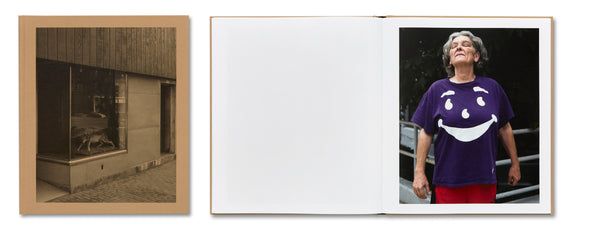 I always look at the obituaries. Today I read that Nikita Williams had died, she was 32 and liked to collect dolls. I didn’t ask her name when I photographed her and, in fact, I never spoke to her again. Neither of us ever acknowledged that we had passed through each other’s lives. After that one meeting, we returned to being strangers, allowing ourselves to be folded back into this landscape.
I always look at the obituaries. Today I read that Nikita Williams had died, she was 32 and liked to collect dolls. I didn’t ask her name when I photographed her and, in fact, I never spoke to her again. Neither of us ever acknowledged that we had passed through each other’s lives. After that one meeting, we returned to being strangers, allowing ourselves to be folded back into this landscape.
Most days you could see Nikita sitting on the curb in front of the church with friends, or in front of the karate studio with a plastic cup asking for money. When I asked her if I could take her picture, I told her she had amazing eyes. This made her smile. Her eyes were a razor sharp pale blue that could pierce you from across the street; it was what drew me to her. Looking back at the picture I saw that it wasn’t just her eyes I was photographing; I was trying to better understand my home. 
Greenfield is the largest town in Franklin County, the least populated county in Massachusetts. It is situated at the crossroads of two major highways; one flowing north/south, the other, east/west. People still pass through here, keeping it from sinking into record as another industrial town, devoured by a culture that no longer needs it.
This is the only place that has ever felt like home to me. My entire life I have moved through Franklin County with an entitled sense of belonging and a false sense of understanding. I’ve watched as buildings have disappeared — burned down, collapsed or abandoned and torn down. But for the most part things have stayed the same. The typewriter store on Bank Row has been there my whole life, as well as the stationer on Main Street. The people carry the residue of the long-gone factories, and houses fill and empty at a generational pace, leaving behind the layers of history on their painted and repainted Victorian clapboards.
As a kid I only thought about leaving, wanting to be somewhere else, to become something else. We spent afternoons escaping behind the grocery store or going down to the train tracks to smoke cigarettes away from the disapproving attentions of teachers and my parents’ acquaintances. I buy groceries for my family at that same store these days. Now that it is home again, I can see that it has always shown its bruises, whether that is the evident imbalance of poverty and wealth, a lack of identity, a crumbling infrastructure, or a young woman panhandling for change. It is a town in stasis, but I am part of it and it is a part of me.
When I opened the newspaper this morning to find Nikita’s story, I pictured the church steps and how bare they will look now. Those few moments I shared with her showed me how we both fit into this topography. We are as imbedded in the scenery as the cracks in the sidewalk.
Nick Meyer, 2020
Extract from The Local by Nick Meyer, published in February 2021.






